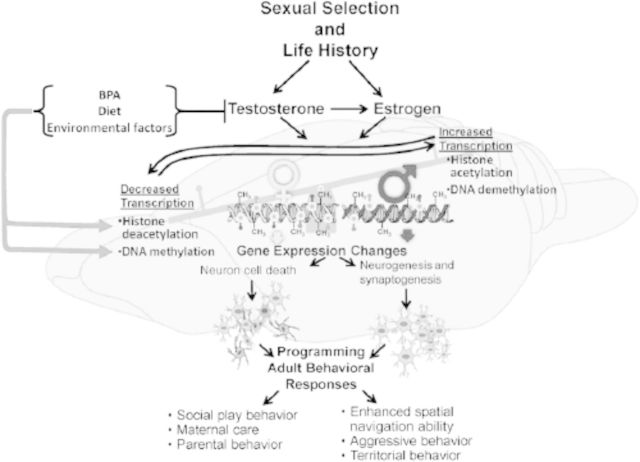Figure 5.
Working hypothetical model of how endocrine disrupting compounds (EDC) such as bisphenol A (BPA) might disrupt sexually selected traits. Steroid hormones, including estrogen and testosterone, can underpin various epigenetic changes, including changes in DNA methylation patterns and histone protein modification. These epigenetic changes can lead to sex-dependent alteration in the neural architecture. Consequently, these epigenetic and morphologic differences underpin sexual differentiation of the brain and synchronization of adult behaviors. Given the sensitivity of these traits to developmental steroid hormone concentrations, exposure to EDCs that disrupt hormone signaling during these critical life history stages has the potential to disrupt the full expression of sexually selected traits. These traits thus might be employed as biomarkers for endocrine disruption and serve as the framework for experiments designed to test the effects of EDCs on brain, cognitive, and behavioral development in males and females.

